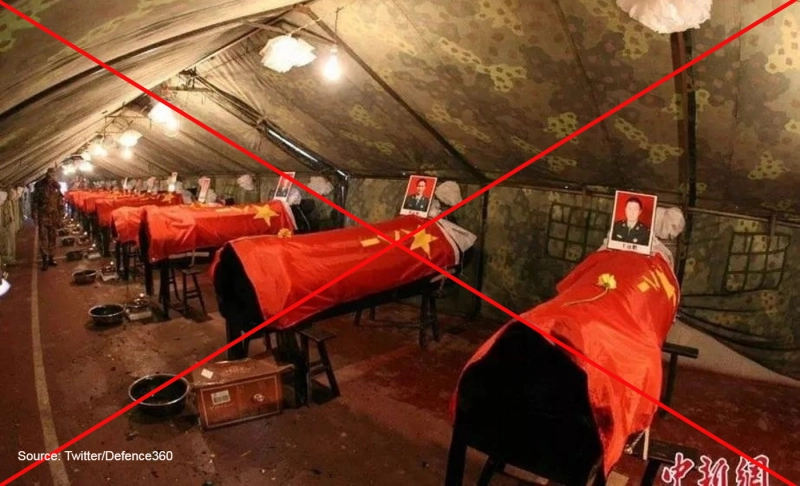By: Anurag Baruah
December 13 2022

The photo shows the coffins of people killed in a grassland fire in China in December 2010 and has no connection with the December 9 clash.
Context
On Monday, 12 December 2022, the Indian army announced that on December 9, 2022, Indian and Chinese troops clashed in the Tawang sector of Arunachal Pradesh. A skirmish took place after 300-400 soldiers from the People's Liberation Army (PLA) crossed the Line of Actual Control (LAC), reported The Times of India.
According to a statement delivered by defense minister Rajnath Singh in parliament on 13 December, Chinese soldiers unilaterally tried to change the status quo in Arunachal Pradesh, but were forced to halt their transgression and return to their posts. He also said that injuries had been sustained on both sides but added that there was no loss of life or any serious injury in the case of the Indian soldiers. The Times of India report said that at least six injured Indian soldiers were receiving treatment at a hospital in Assam's Guwahati. However, no statement has been forthcoming on the condition of the Chinese soldiers from Chinese officials.
This is the first such encounter between India and China since the Galwan Valley incident in June 2020. Similarly to this incident, various old photos and videos purporting to be of the 2022 clash are being shared on social media.
On 13 December, a Twitter user posted an image of what appeared to be multiple coffins wrapped in Chinese flags and bearing photos of individuals. The tweet claimed that 50 Chinese soldiers had been injured and 20 killed in the clash in the Tawang Sector, implying the photo showed Chinese soldiers who died in the December 9 incident. However, this is not true, and the photo bears no connection to the December 9 clash between Indian and Chinese troops in the Tawang Sector.
In Fact
We conducted a reverse image search on the viral photo and found it included in a news report published on a Chinese news website on December 7, 2010. According to the report, a grassland fire had broken out in Daofu County, Sichuan Province, leaving several dead, including officers and soldiers. Another report from December 9 by the same publication carried the same photos and mentioned the Daofu Fire Fighting and Disaster Relief Memorial Conference held in Kangding to pay respect to those who perished in the grassland fire.
We conducted a keyword search that led us to multiple news reports about the grassland fire incident. A Reuters report from December 5, 2010, said that at least 22 people died and one person was severely burned when a spreading grassland fire swept through a mountainous Tibetan region in southwest China.
Similarly, a report by The South China Morning Post dated December 6, 2010, said that 22 people had been killed and three people had been severely burned. The report added that out of the fatalities, 15 were soldiers, two were workers with the grassland administration, and five were local residents.
The Verdict
A photo showing people killed in a grassland fire in 2010 in a mountainous region in southwest China is being erroneously linked to the recent encounter between Indian and Chinese soldiers in India's Arunachal Pradesh. The image has no connection to the clash that took place on December 9, 2022. Therefore, we have marked the claim as false.